The BD Nexiva™ Diffusics™ Closed IV Catheter System is built upon the BD Nexiva™ Diffusics™ Closed IV Catheter System with the added benefit of a diffusion catheter tip designed to address common IV challenges in CT, such as sufficient gauge size and catheter stability in the vein, during power injection procedures.
BD Nexiva™ Diffusics™ Closed IV Catheter System
Achieve performance under pressure
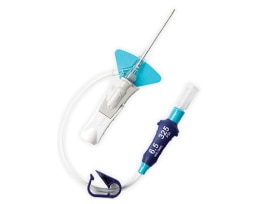



- Overview
- Products & Accessories
- EIFU & Resources
The BD Nexiva™ Diffusics™ Closed Catheter enables higher flow rates with a smaller gauge catheter (22 to 24 G).‡
The BD Nexiva™ Diffusics™ Closed IV Catheter System reduces the destabilizing effects that may lead to extravasation. The catheter tip features multiple teardrop-shaped diffusion holes which reduce forces that may cause catheter motion in the vein by up to 67%.*

Diffusion catheter tip
BD Nexiva™ Diffusics™ catheter tip features multiple teardrop-shaped holes to diffuse flow.
In a clinical study, BD Vialon™ Catheter Material demonstrated longer dwell time, lower phlebitis rates and lower phlebitis scores than an FEP catheter.9
Preserves sites
BD Nexiva™ Diffusics™ Catheter System is an all-in-one PIVC shown to preserve sites for longer.1,3,^
Lessens blood exposure
By choosing the BD Nexiva™ Diffusics™ Catheter System, you can reduce the risk of complications and blood exposure as well as preserve sites compared to an open system.1,3
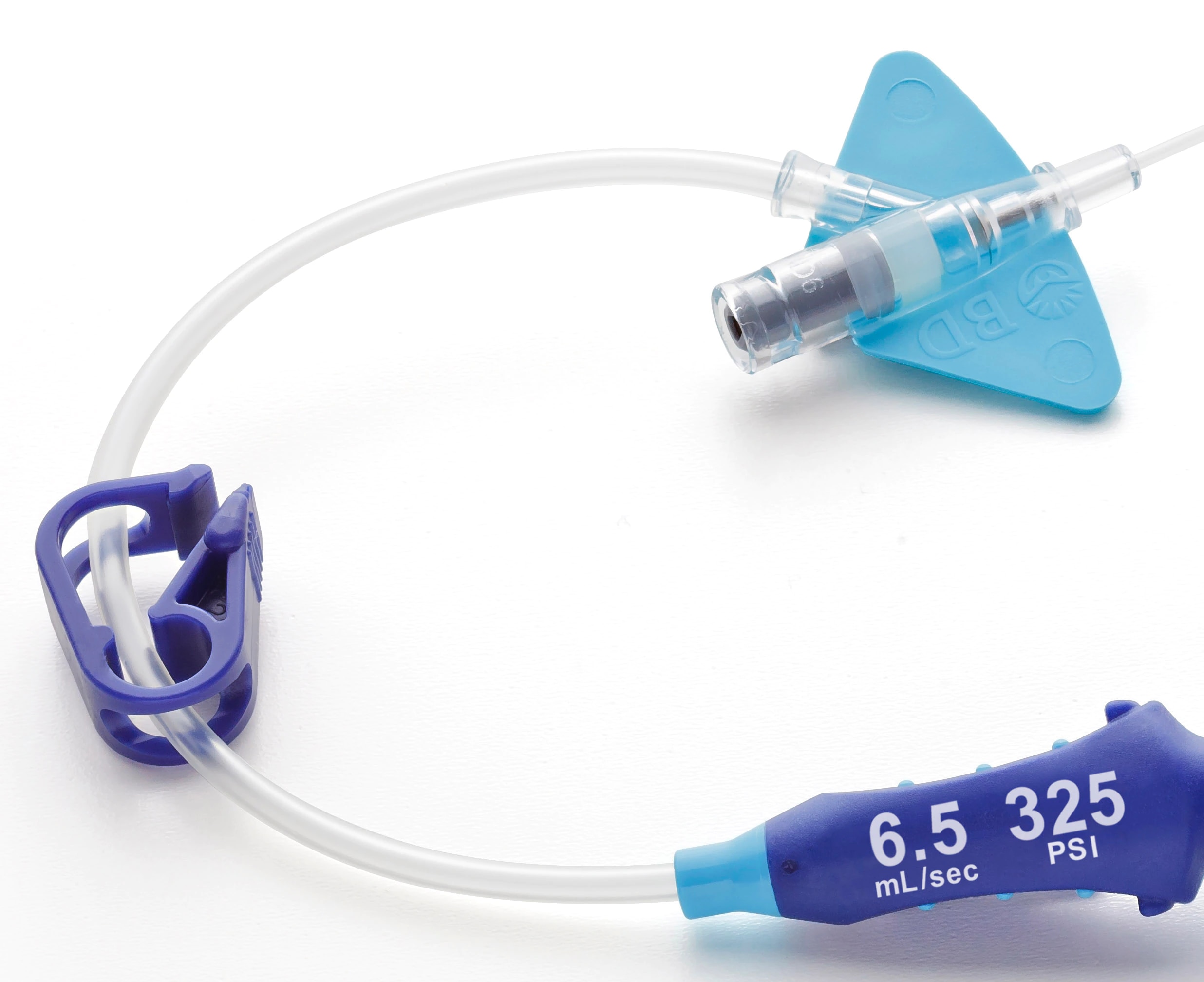
- The system features an all-in-one catheter and extension set built for your power injector's 325 psi setting.
- A unique all-in-one closed system designed to address common CT IV challenges during power injection procedures.*
Reduces accidental dislodgement
The BD Nexiva™ Diffusics™ with the built-in stabilization platform reduces dislodgement by 84%.3,#
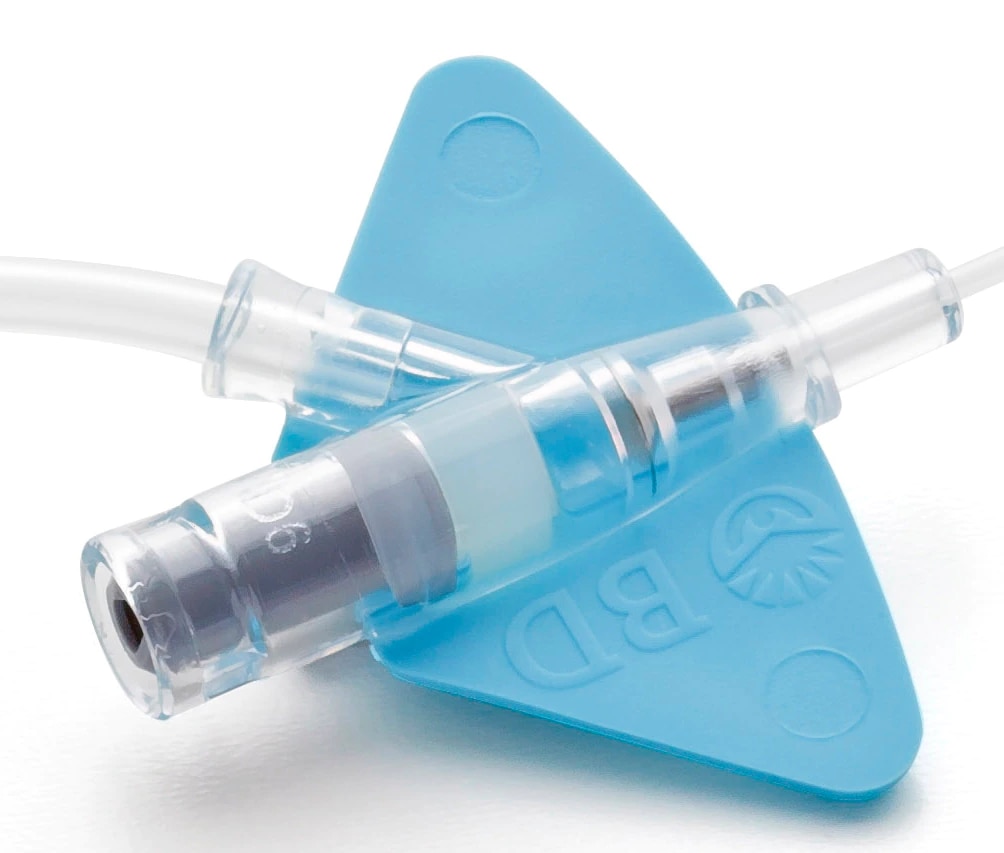
Built-in stabilization platform
Minimizes movement and manipulation at the insertion site reducing accidental dislodgement.2**
First attempt insertion
BD Instaflash™ Needle Technology incorporates a notched needle, which is designed to improve first-stick success and reduce painful hit-and-miss insertions.
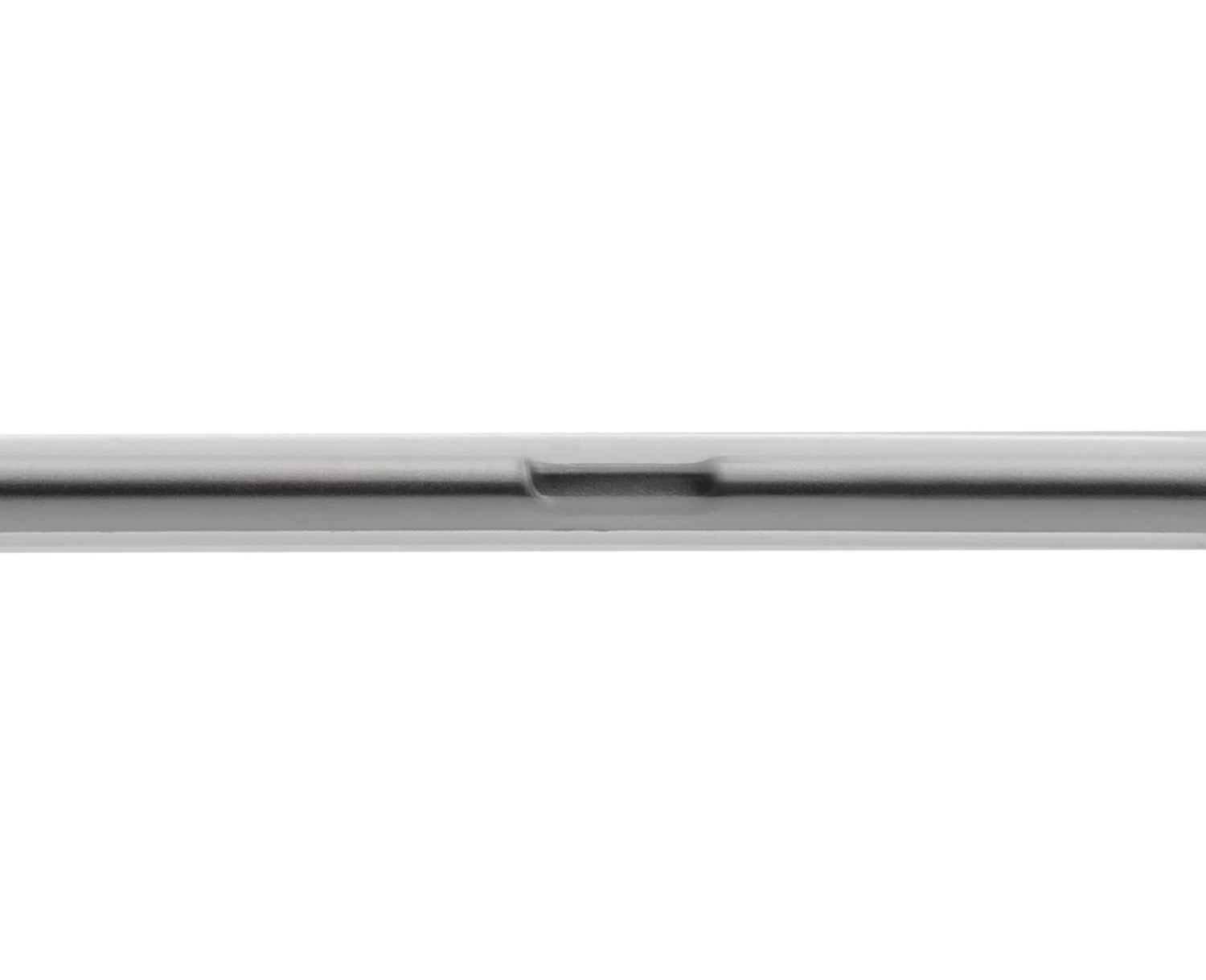
BD Instaflash™ Needle Technology
Incorporates a notched needle, which has clinically demonstrated improved first-attempt insertion success, reducing painful hit-and-miss insertions.6,7
Lowers chance of mechanical phlebitis
The BD Nexiva™ Diffusics™ Catheter System demonstrated a 29% reduction in phlebitis rates when compared to an open system with a PTFE catheter.1
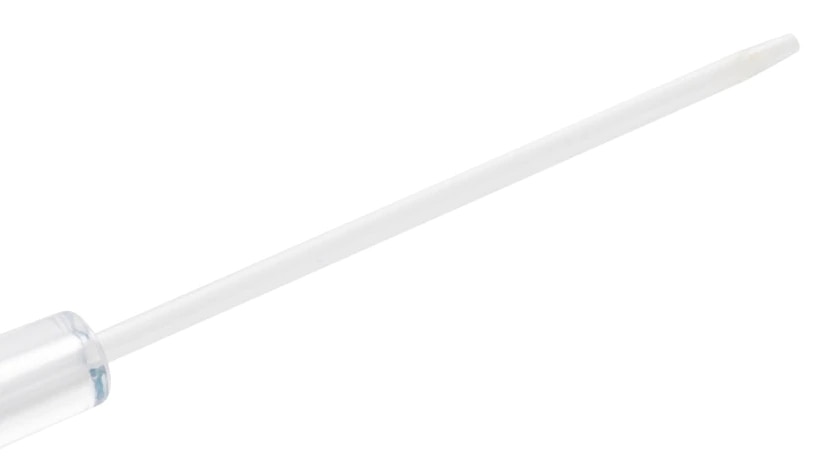
BD Vialon™ Catheter Material
- Proprietary BD Vialon™ Catheter Material softens, enabling longer dwell time and reducing the chance of phlebitis up to 69%.t,8-10
- BD Vialon™ Catheter Material has been clinically demonstrated to dwell up to 144 hours.1
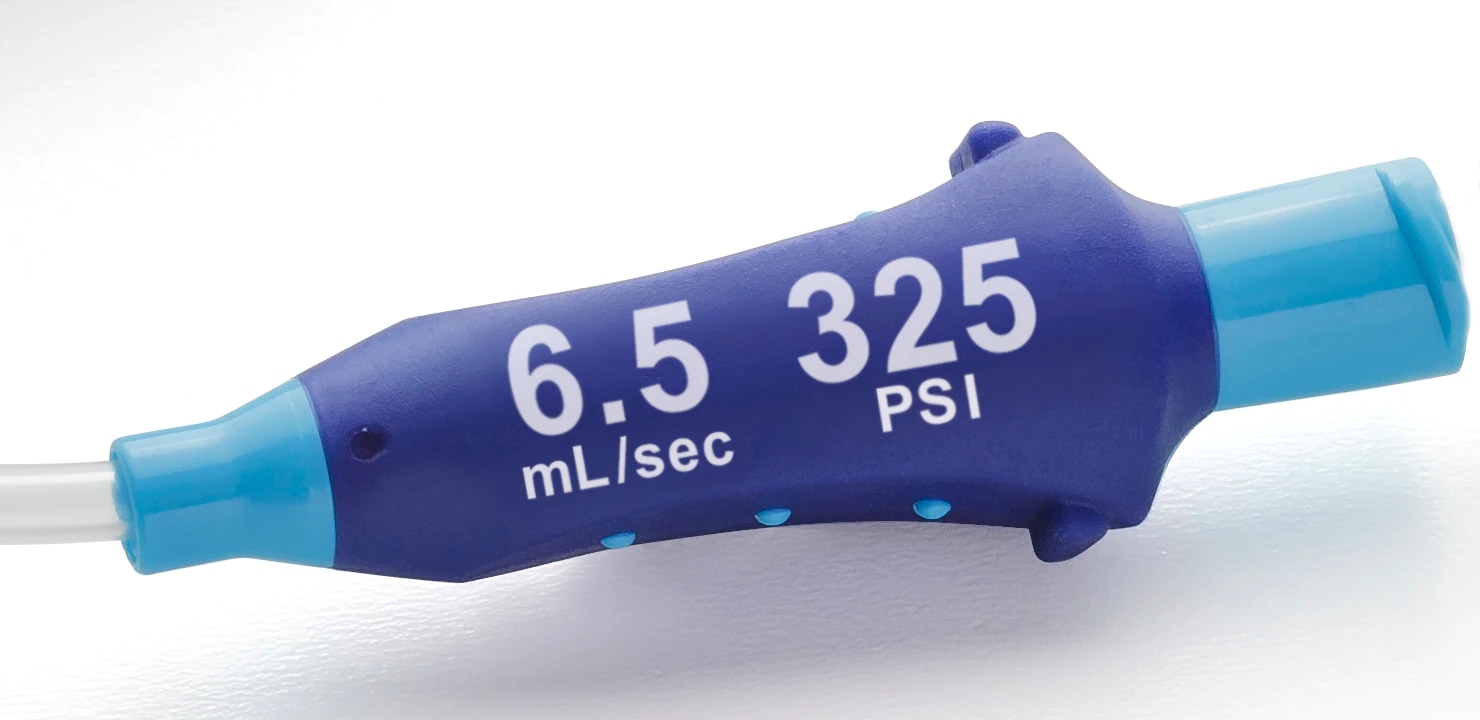
- The system features a luer adapter with indication of maximum power injection flow rates and pressure setting.
Catheter stabilization is recognized as an intervention to decrease the risk for phlebitis, catheter migration and dislodgement and may be advantageous in preventing catheter-related bloodstream infections (CRBSIs).7
Recommend limiting the use of add-on devices to reduce the potential for contamination, additional manipulation, and disconnection.4
98% reduced blood exposure during insertion due to the BD Nexiva IV Catheter pre-assembled system.3*
Clinically demonstrated to reduce accidental dislodgement,3‡ meeting Infusion Nursing Society standards4 and CDC guidelines7 for catheter stabilization.
A clinical study's results demonstrated a significant reduction in the rate of phlebitis (grade 2 or higher) (36%), catheter-related complications (25%), and infiltration (24%) in a closed system group compared to an open system group.1
BD Nexiva™ Diffusics™ Product Overview Animation
BD Nexiva™ Diffusics™ Closed IV Catheter Insertion Techniques
BD Nexiva™ Diffusics™ - Diffusion Animation
BD offers training resources to help improve your clinical practices as part of our goal of advancing the world of health.
BD supports the healthcare industry with market-leading products and services that aim to improve care while lowering costs. We host and take part in events that excel in advancing the world of health™.
Notes
* Compared to a nondiffusion tip IV catheter
† Compared to a fluorinated ethylene propylene (FEP) catheter
‡ Bench test results may not necessarily be indicative of the clinical performance.
** Compared to B. Braun Introcan Safety® catheter with Bard Statlock® IV Ultra stabilization device.
^ Up to 144 hours compared to 96 hours with an open system with a PTFE catheter
# BD Nexiva™ Closed System with 3M™ Tegaderm™ IV Securement Dressing compared to B. Braun Introcan Safety® catheter with Statlock® IV Ultra stabilization device and non-bordered dressing
References
- Gonzalez Lopez J, Arribi Vilela A, Fernandez Del Palacio E, et al. Indwell times, complications and costs of open vs closed safety peripheral intravenous catheters: a randomized study. J Hosp Infect. 2014;86(2):117-126.
- Tamura N, Ave S, Hagimoto K, et al. Unfavorable peripheral intravenous catheter replacements an be reduced using an integrated closed intravenous catheter system. J Vasc Access. 2014;15(4):257-263.)
- Bausone-Gazda D, Lefaiver CA, Walters SA. A randomized controlled trial to compare the complications of 2 peripheral intravenous catheter-stabilization systems. J Infus Nurs. 2010;33(6):371-384.)
- Infusion Nurses Society;. Infusion therapy standards of practice. J Infus Nurs. 2016:39(1S)S72. Alexander M, Corrigan A. Gorski L, et al. Infusion nursing: an evidence based approach. 3rd ed. St. Louis, MO: Saunders Elsevier; 2010:410.
- Alexander M, Corrigan A. Gorski L, et al. Infusion nursing: an evidence based approach. 3rd ed. St. Louis, MO: Saunders Elsevier; 2010:410.
- van Loon FHJ, Timmerman R, den Brok GPH, Korsten EHM, Dierick-van Daele ATM, Bouwman ARA. The impact of a notched peripheral intravenous catheter on the first attempt success rate in hospitalized adults: block-randomized trial. JVA. 2021 DOI: 10.1177/1129729821990217.
- Seetharam AM, Raju U, Suresh K. A randomized controlled study to compare first stick success with Instaflash technology: The FIRSST study. JVA. 2022 DOI:10.1177/11297298221080369.
- Gaukroger PB, Roberts JG, Manners TA. Infusion thrombophlebitis: a prospective comparison of 645 Vialon and Teflon cannulae in anaesthetic and postoperative use. Anaesthesia and Intensive Care. 1988;16:265-271.
- Kus B, Buyukyilmaz F. Effectiveness of Vialon biomaterial versus Teflon catheters for peripheral intravenous placement: A randomized clinical trial. Jpn J Nurs Sci. 2020;e12328. https://doi.org/10.1111/jjns.12328.
- Maki DG, Ringer M. Risk factors for infusion-related phlebitis with small peripheral venous catheter. Annals of Internal Medicine. 1991;114:845-854.
BD-22672 (09/30)
